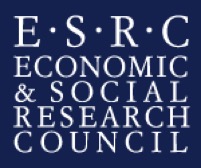Infrastructure and Conflict: Global Challenges, Regional Contexts
In Mongolia, infrastructure conflict takes on myriad forms. Displacement, allegations of water or air pollution, changes to pastureland—these are the most visible issues that are regularly attributed to the development of mines, highways, etc.
In the worst of instances, tensions can boil over and turn violent. Neighbors quarrel, shout each other down at meetings, or even brawl. Such altercations are rare, but not unheard of. In Mongolia, a relatively stable country, this sort of violence is usually interpersonal. It may echo issues of urban/rural divides or inequality, but is often limited to the immediate questions at hand: how will I get clean water? Will I be compensated if I am displaced? Larger political questions can feel relatively distant in these situations.
But in more volatile countries, the same encroachment of unwanted infrastructure can further inflame pre-existing tensions. Infrastructure involves assets, capital, and territory. Depending on how development is pursued, there will often be winners and losers to a given project. When the chips are allowed to fall where they may, the perception of inequity can antagonize border disputes and exacerbate tribal or separatist movements.
The scale of these violent responses indicate the degree to which local people feel profoundly threatened by the prospect of development. Many of these instances of violence are the last-resort responses to a perceived infringement upon sovereignty. Particularly in regions with already-volatile contestations of territory and authority, development by foreign financiers is perceived as a grave threat. While these violent conflicts are usually the tip of the proverbial iceberg, they indicate the extent to which the development of a new economic corridor, such as BRI, can inflame regional tensions if not managed so as to carefully account for existing political realities.
The conflict resolution model currently under development as part of the Gobi Framework is intended to help mitigate this sort of conflict. While the consequences of unmediated infrastructure disputes may vary widely, even within a given region, the root causes are often the same. Perceived threats to livelihoods, infringement upon traditional land claims, degradation of natural resources, and the sense of injustice from having local assets sold overseas by foreign developers—these same issues predominate infrastructure disputes globally.
The Gobi Framework is also preoccupied with another global trend: infrastructure-related violence rarely occurs except when preceded by nonviolent protest. Unless infrastructure developers rely upon effective strategies to engage local stakeholders, development-related violence is likely to increase in frequency as investment accelerates in future years, particularly in areas like Central Asia. The spectre of violence reminds us that infrastructure entails much more than apolitical flows of economic goods. Understanding the historical and cultural textures in which these developments take place are critical to securing infrastructural futures that benefit stakeholders and shareholders alike.




